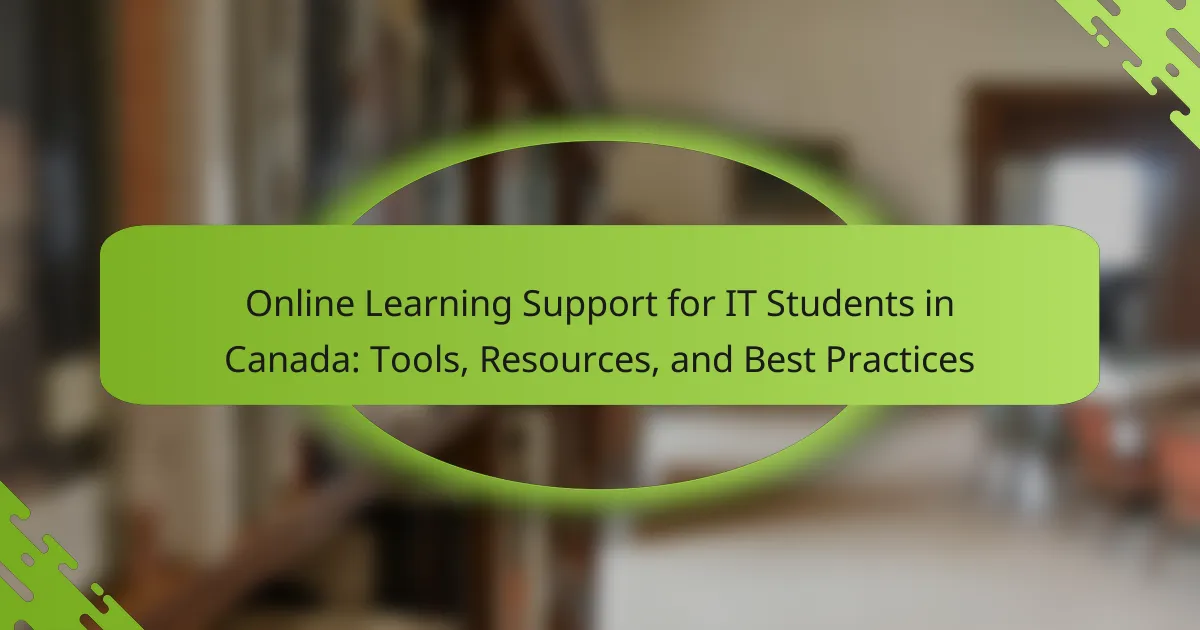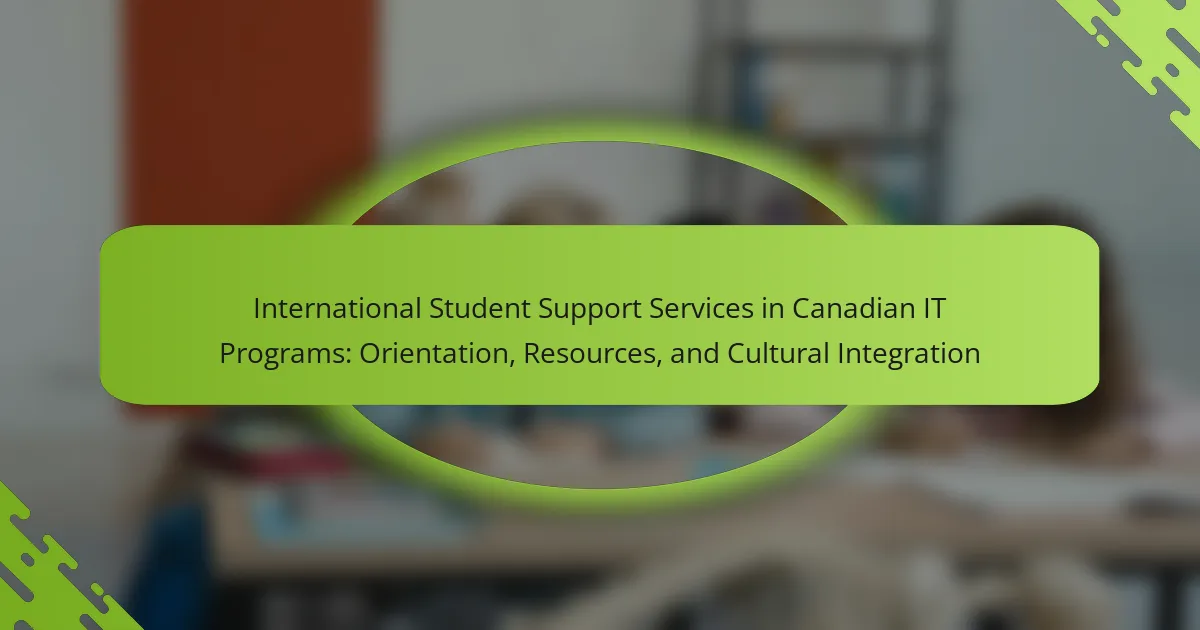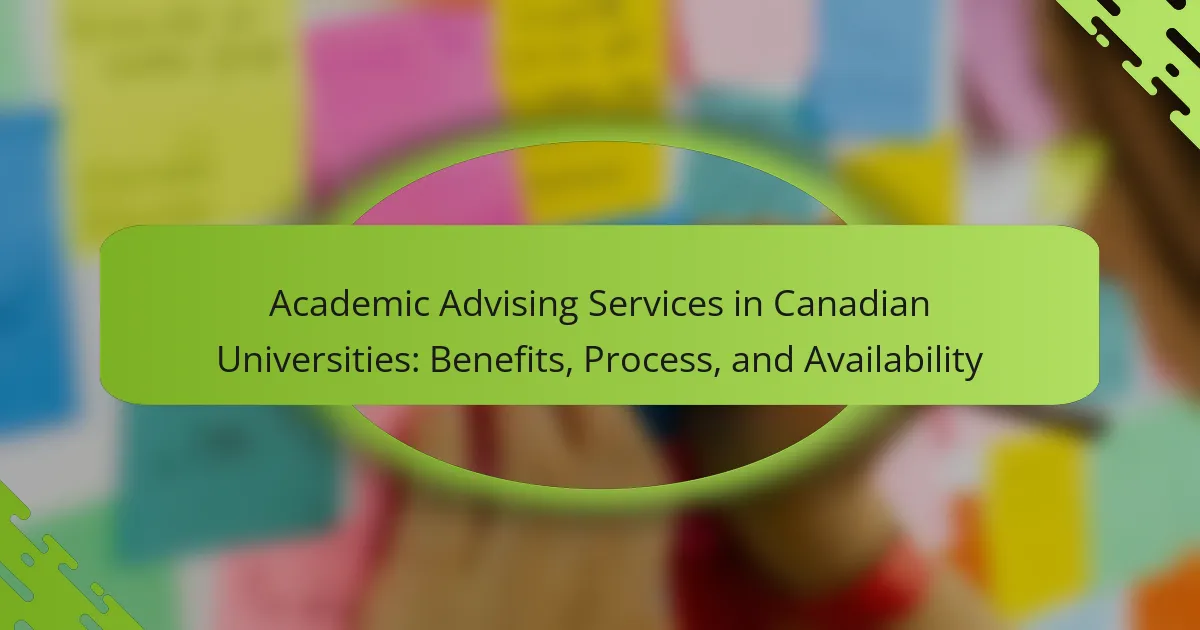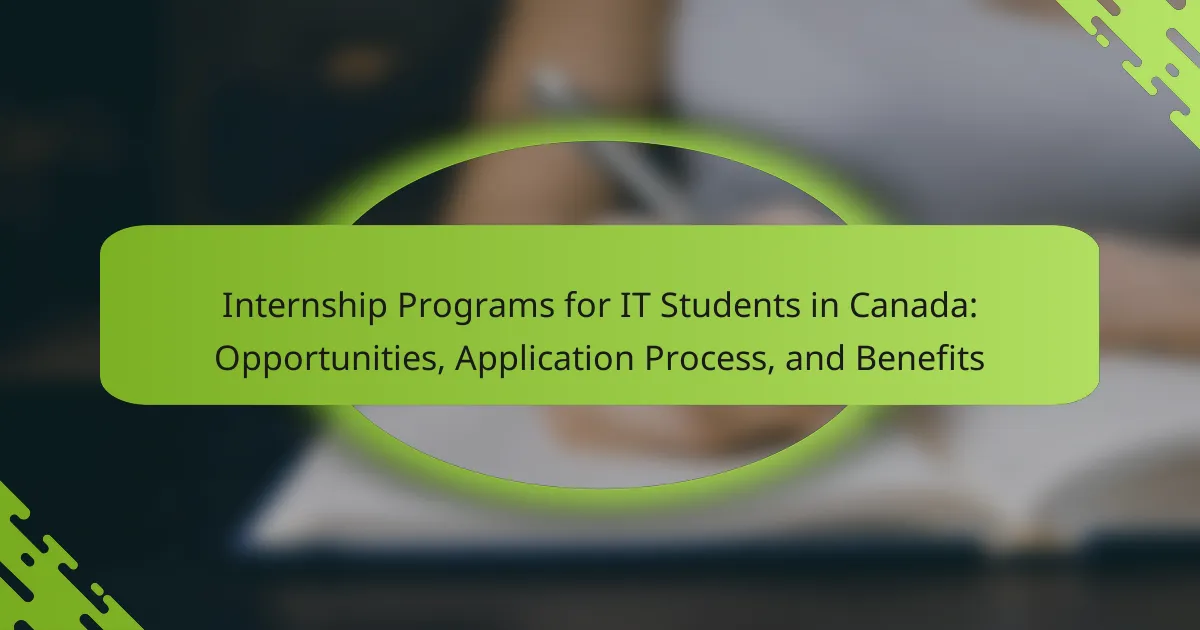Accessibility services in Canadian universities provide essential support for students with disabilities, focusing on creating an inclusive educational environment. These services include accommodations such as note-taking assistance, exam modifications, and access to specialized learning resources, particularly for IT students. Research indicates that over 20% of Canadian university students report having a disability, underscoring the significance of these services in promoting equitable access to education. Accessibility offices play a crucial role in offering tailored support, assistive technology, and personalized tutoring to help students navigate their academic journey effectively. Engaging with these services is linked to higher academic success and increased confidence among students with disabilities.
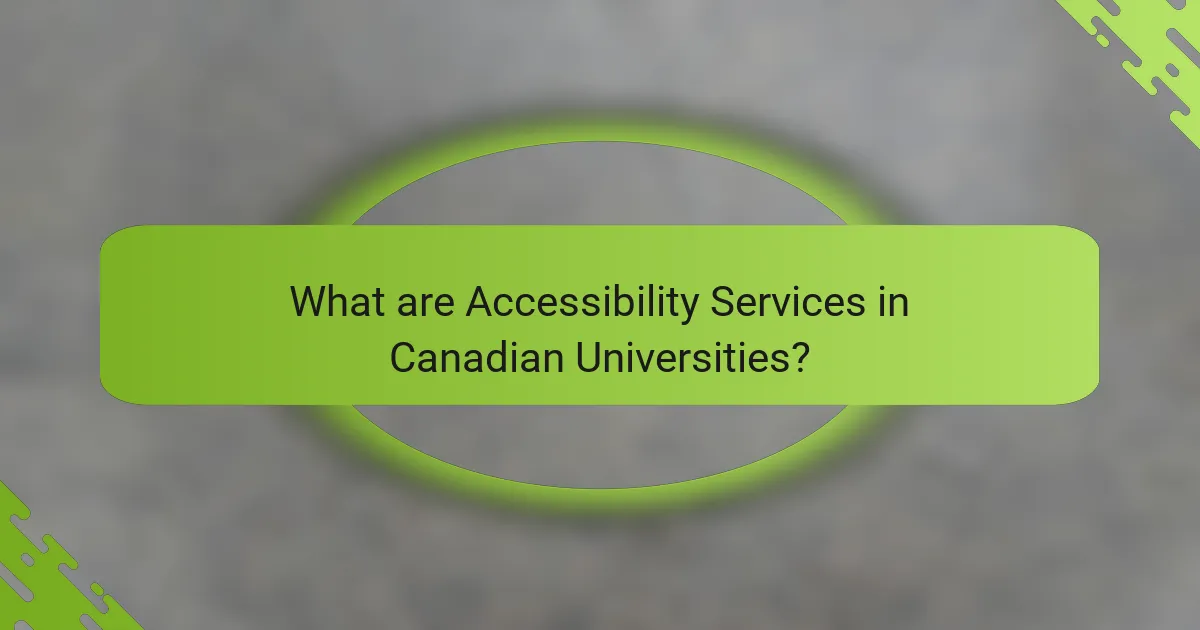
What are Accessibility Services in Canadian Universities?
Accessibility services in Canadian universities provide support for students with disabilities. These services include accommodations such as note-taking assistance, exam modifications, and specialized learning resources. They aim to create an inclusive educational environment. Accessibility services also offer guidance on assistive technology and adaptive equipment. According to research, over 20% of Canadian university students report having a disability. This highlights the importance of such services in ensuring equitable access to education. Many universities have dedicated accessibility offices to assist students in navigating these resources.
How do Accessibility Services support students with disabilities?
Accessibility Services support students with disabilities by providing tailored accommodations. These accommodations include extended exam times, note-taking assistance, and alternative formats for course materials. Accessibility Services also offer assistive technology, such as screen readers and speech-to-text software. They work with faculty to ensure that course content is accessible to all students. Additionally, Accessibility Services provide guidance on disability-related issues and advocate for student needs within the institution. Research shows that such support significantly improves academic performance and retention rates for students with disabilities.
What types of disabilities are addressed by these services?
Accessibility services in Canadian universities address various types of disabilities. These include physical disabilities, which may affect mobility and require adaptive technologies. Sensory disabilities, such as visual or hearing impairments, are also supported through specialized resources. Cognitive disabilities, which impact learning and processing information, are addressed with tailored academic accommodations. Mental health disabilities are included, providing support for students facing psychological challenges. Additionally, learning disabilities, such as dyslexia, receive specific interventions to aid academic success. These services ensure that all students have equitable access to education.
What resources are available through Accessibility Services?
Accessibility Services provide various resources to support students with disabilities. These resources include academic accommodations, assistive technology, and specialized tutoring. Students can access note-taking services and exam modifications tailored to their needs. Additionally, services may offer counseling and advocacy support. Workshops on disability awareness and skills development are also available. These resources aim to facilitate equal access to education. Accessibility Services are essential for promoting an inclusive learning environment for all students.
Why is support for IT students with disabilities important?
Support for IT students with disabilities is important to ensure equal access to education and opportunities. These students often face unique challenges that can hinder their academic performance. Providing support helps to level the playing field in a competitive field like IT. It also fosters an inclusive learning environment that benefits all students. According to the Canadian Association of Disability Service Providers in Post-Secondary Education, institutions that provide adequate support see improved academic outcomes for these students. Furthermore, supporting disabled students in IT can enhance diversity in the tech industry, which is crucial for innovation and problem-solving.
How do disabilities impact the learning experience in IT programs?
Disabilities can significantly impact the learning experience in IT programs. Students with disabilities may face barriers in accessing course materials. This includes difficulties with visual content, auditory information, or physical tasks. For example, a student with a visual impairment may struggle with coding exercises that rely on screen reading software. Additionally, students may require specialized software or hardware to participate fully in class activities. Research shows that inclusive teaching practices can enhance learning outcomes for these students. According to a study by the Canadian Accessibility Network, 75% of students with disabilities reported improved academic performance when provided with appropriate accommodations. Therefore, addressing these challenges is crucial for equitable access to IT education.
What are the legal obligations of Canadian universities regarding accessibility?
Canadian universities are legally obligated to provide accessible education under the Accessibility for Ontarians with Disabilities Act (AODA) and the Canadian Human Rights Act. These laws require institutions to ensure equal access to educational opportunities for students with disabilities. Universities must implement policies and practices that remove barriers to accessibility. This includes physical accessibility of facilities and digital content. Additionally, they must provide accommodations tailored to individual needs. Compliance with these laws is monitored by the provincial government and human rights commissions. Failure to meet these obligations can result in legal consequences for the institutions.
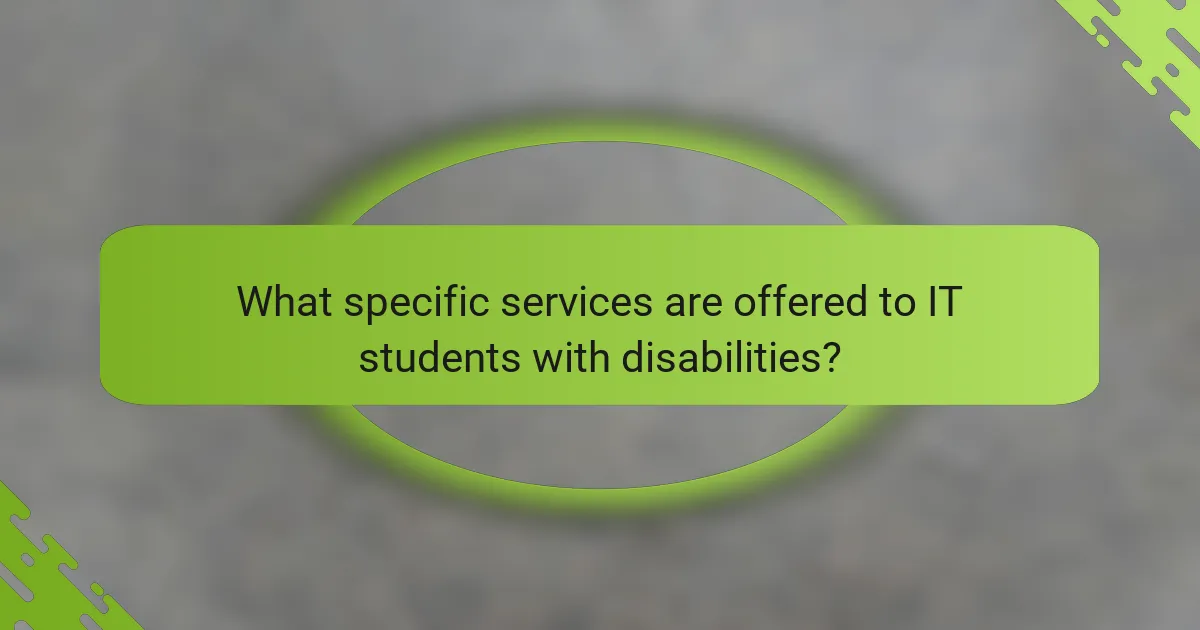
What specific services are offered to IT students with disabilities?
Canadian universities offer various specific services to IT students with disabilities. These services include academic accommodations such as extended exam time and alternative formats for course materials. Assistive technology is also provided, including screen readers and speech-to-text software. Personalized tutoring and mentoring programs are available to support learning needs. Accessibility consultations help students navigate university resources effectively. Additionally, physical accommodations ensure accessible classrooms and labs. Support groups foster community among students with disabilities. These services aim to create an inclusive educational environment for IT students.
How do universities provide academic accommodations?
Universities provide academic accommodations through various support services tailored for students with disabilities. These accommodations may include extended exam time, alternative formats for course materials, and assistive technology access. Each university typically has an accessibility services office responsible for evaluating student needs. Students are often required to submit documentation of their disabilities to receive accommodations. The process includes individualized assessments to determine appropriate support measures. Many universities also offer training sessions for faculty on inclusive teaching practices. Research shows that such accommodations can significantly enhance academic performance for students with disabilities. For example, a study by the Canadian Association of Disability Service Providers in Post-Secondary Education indicates that tailored support improves retention rates among these students.
What types of academic accommodations are commonly requested?
Commonly requested academic accommodations include extended exam time, note-taking assistance, and alternative formats for course materials. Students may also request access to assistive technology and preferential seating in classrooms. Other accommodations can involve reduced course loads and flexibility in attendance policies. These adjustments aim to level the playing field for students with disabilities. Research indicates that effective accommodations can significantly enhance academic performance and retention rates among students with disabilities.
How are these accommodations implemented in IT courses?
Accommodations in IT courses are implemented through various strategies tailored to support students with disabilities. These strategies include providing accessible course materials, such as digital formats compatible with screen readers. Instructors may offer flexible deadlines to accommodate students’ individual needs. Additionally, assistive technologies like speech-to-text software are often integrated into the curriculum.
Universities may also establish dedicated support services that facilitate communication between students and faculty. Regular training sessions for faculty on disability awareness and inclusive teaching practices are common. Furthermore, personalized learning plans are developed in collaboration with students to address specific challenges. Research indicates that these accommodations significantly enhance learning outcomes for students with disabilities in IT programs.
What assistive technologies are available for IT students with disabilities?
Assistive technologies available for IT students with disabilities include screen readers, speech recognition software, and adaptive keyboards. Screen readers convert text on a screen into speech or braille. Popular screen readers include JAWS and NVDA. Speech recognition software allows students to control their computers using voice commands. Dragon NaturallySpeaking is a widely used example. Adaptive keyboards are designed for easier use by individuals with physical disabilities. These devices can include keyguards and ergonomic designs. Other technologies include magnification software and text-to-speech programs. These tools enhance accessibility in educational settings. They support diverse learning needs and promote inclusivity for students with disabilities.
How do these technologies enhance learning and participation?
Technologies enhance learning and participation by providing accessible tools for students with disabilities. These tools include screen readers, speech-to-text software, and adaptive learning platforms. Screen readers convert text to speech, allowing visually impaired students to access written content. Speech-to-text software enables students with hearing impairments to participate in discussions. Adaptive learning platforms personalize educational experiences based on individual needs. Research shows that 80% of students using assistive technology report improved academic performance. Additionally, these technologies foster greater engagement by facilitating collaboration among diverse learners.
What are some examples of assistive technologies used in IT education?
Examples of assistive technologies used in IT education include screen readers, speech recognition software, and text-to-speech tools. Screen readers convert text displayed on a screen into speech. This technology assists visually impaired students in accessing digital content. Speech recognition software allows users to control devices and input text using voice commands. This tool benefits students with mobility impairments. Text-to-speech tools read aloud written content, helping students with learning disabilities. Other examples include magnification software and alternative input devices. Magnification software enlarges text and images for better visibility. Alternative input devices, such as adaptive keyboards, cater to individual needs. These technologies enhance accessibility and support diverse learning requirements in IT education.
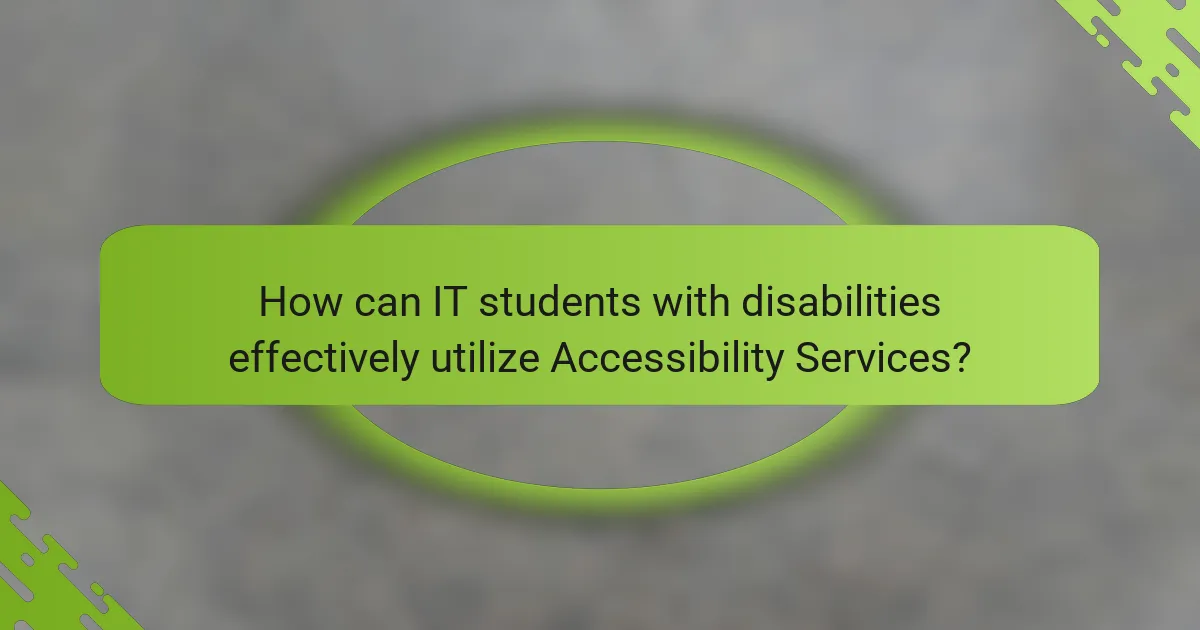
How can IT students with disabilities effectively utilize Accessibility Services?
IT students with disabilities can effectively utilize Accessibility Services by first registering with their university’s Accessibility Office. This office provides tailored support based on individual needs. Students should disclose their specific disabilities to receive appropriate accommodations. Common services include note-taking assistance, extended exam time, and adaptive technology.
Students must communicate their needs clearly and regularly with Accessibility Services. This ensures that the support remains relevant throughout their studies. Additionally, they should take advantage of workshops and resources offered by the office. These may include training on assistive technologies and time management skills.
Research indicates that students who actively engage with Accessibility Services report higher academic success. A study by the Canadian Association of Disability Service Providers found that 85% of students utilizing such services felt more confident in their academic abilities.
What steps should students take to access these services?
Students should first contact their university’s accessibility services office. They can find contact information on the university’s website. Next, students should schedule an appointment to discuss their specific needs. During this meeting, students will need to provide documentation of their disability. This documentation typically includes medical records or assessments. After the appointment, students will receive a plan outlining the accommodations available to them. Finally, students should regularly communicate with their accessibility advisor to ensure ongoing support.
How can students advocate for their needs within the university?
Students can advocate for their needs within the university by actively engaging with university resources. They should familiarize themselves with the accessibility services available on campus. This includes understanding the specific accommodations they are entitled to under the law, such as those outlined in the Accessibility for Ontarians with Disabilities Act.
Students can also participate in student government or advocacy groups to voice their concerns. Attending meetings and providing feedback on accessibility issues is crucial. Building relationships with faculty and staff can help in discussing individual needs effectively.
Additionally, documenting specific challenges faced can strengthen their case. Sharing personal experiences can raise awareness among peers and administration. Utilizing social media platforms to highlight accessibility issues can also amplify their voices.
These actions can lead to increased support and resources for students with disabilities, fostering a more inclusive university environment.
What best practices can enhance the experience of IT students with disabilities?
Implementing inclusive teaching strategies enhances the experience of IT students with disabilities. These strategies include providing accessible course materials in multiple formats. Utilizing assistive technologies, such as screen readers and speech recognition software, facilitates learning. Offering flexible assessment methods accommodates diverse learning needs. Encouraging collaboration among students fosters a supportive learning environment. Regular training for faculty on accessibility best practices is essential. Establishing clear communication channels for students to express their needs promotes inclusivity. Providing dedicated support services, such as tutoring and counseling, further enhances the educational experience.
How can peer support networks contribute to success?
Peer support networks can significantly contribute to success by providing emotional and practical assistance. These networks foster a sense of belonging among participants. They encourage sharing of experiences and strategies for overcoming challenges. Research shows that students engaged in peer support are more likely to persist in their studies. A study by the University of Toronto found that peer support improved academic performance by 15%. Additionally, peer networks can enhance self-esteem and motivation. They offer a platform for building social connections, which is vital for mental health. Overall, peer support networks create an environment conducive to personal and academic success.
What resources are available for ongoing support and development?
Accessibility services in Canadian universities offer various resources for ongoing support and development. These include academic accommodations tailored to individual needs. Many universities provide assistive technology training to enhance learning experiences. Additionally, counseling services are available to support mental health and well-being. Peer support programs connect students with similar experiences for shared learning. Workshops on study skills and time management are often offered. Online resources and platforms provide access to educational materials. Regular check-ins with accessibility advisors ensure ongoing support. These resources collectively foster an inclusive environment for IT students with disabilities.
Accessibility services in Canadian universities provide essential support for students with disabilities, particularly in IT programs. These services include tailored academic accommodations, assistive technologies, and resources to foster an inclusive learning environment. The article outlines the types of disabilities addressed, the legal obligations of universities, and the specific services available to IT students. Additionally, it emphasizes the importance of effective communication with accessibility offices and the role of peer support networks in enhancing academic success. Overall, the article highlights how these services contribute to equitable access to education and improved outcomes for students with disabilities.
